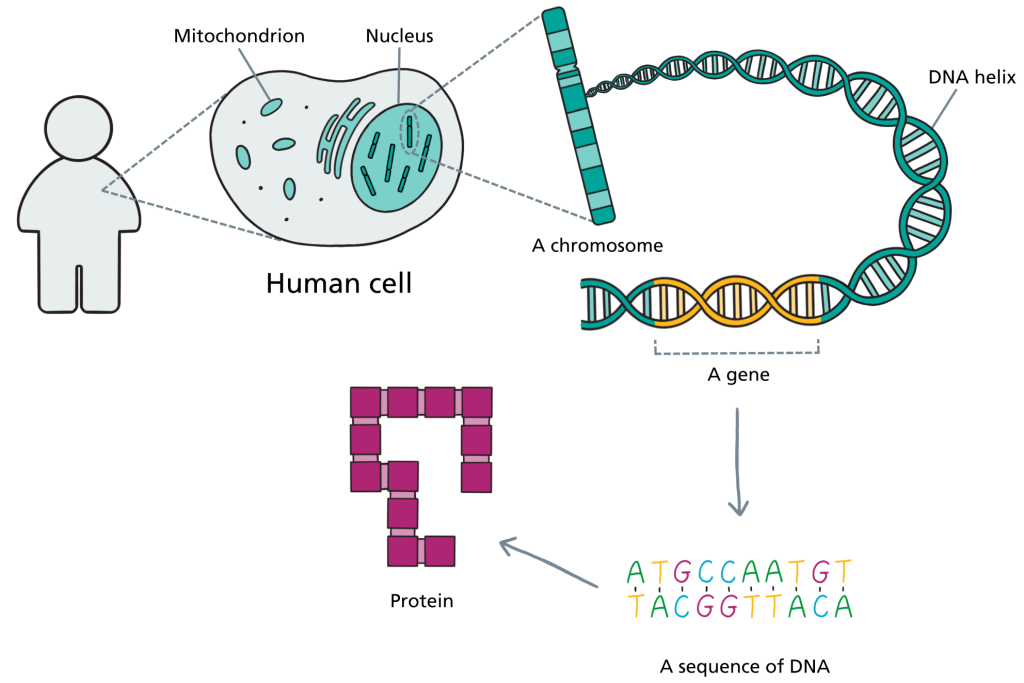Visual communication aid: Genes, chromosomes and DNA
This communication aid has been produced to complement discussions about genes, chromosomes and DNA during consultations with patients.
View and download communication aid(s)
There is one communication aid available to view and download (.pdf):
Double-sided printing in colour is recommended (but not required). All content is also included below in an accessible format.
More information about these and other VCAs is available in this article.
Understanding genes, chromosomes and DNA
Our bodies are made up of trillions of cells. Almost all cells have a nucleus that contains our genetic information, called DNA, which is organised into genes and packaged into structures called chromosomes. Some genetic information is also found in a cell’s mitochondria (figure 1).
All the DNA contained in one cell is called the genome.
Chromosomes: DNA in the nucleus is packaged into chromosomes. People usually have 23 pairs of chromosomes: 22 pairs of autosomes and one pair of sex chromosomes. One chromosome from each pair is inherited from each parent.
DNA: DNA is made up of molecules called bases, arranged in a double helix pattern. The bases are called adenine(A), cytosine (C), guanine (G) and thymine (T).
Genes: Genes are stretches of DNA which contain instructions for making proteins. Proteins affect how a person’s body grows and functions (for example, hair or eye colour). DNA between genes can also have other important roles. Humans have over 20,000 genes, that we know of. Everybody has two copies of each gene, one inherited from each parent. Genes can contain small differences in their DNA sequence between the two copies, and between individuals.
Resources
For clinicians
- NHS England Genomics Education Programme (GEP): What is a genome? (animation, 2 minutes)
- NHS England GEP: What is DNA (animation, 2 minutes)
